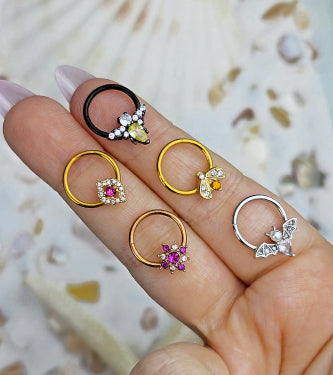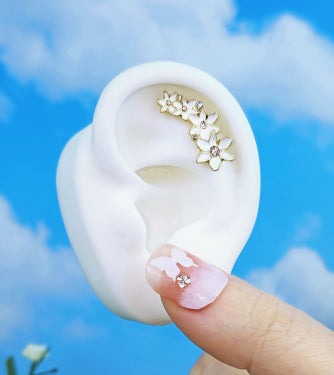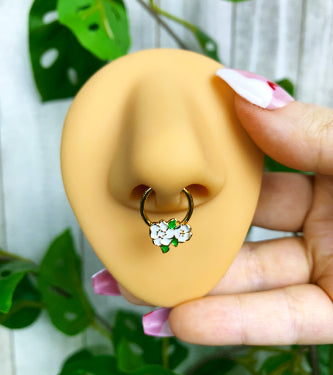Why are cheek piercings risky?
A hot piercing has been making the scene lately, showing up more and more often on social media…. cheek piercings! Sometime called “dimple piercings”, these are simply matched cheek piercings, placed in the spot where dimples would naturally appear when you smile. They’re generally done with a straight barbell, so that the inner cheek tissue doesn’t grow over the back of the jewelry, but sometimes a labret stud is also used to help avoid dental damage. A 12 gauge barbell or larger should be used for this particular piercing, to help keep it stable.
Cheek piercings are a notorious challenge to heal. They frequently “flare up”, getting swollen and irritated, despite being well into the healing process. This means that frequent jewelry changes are necessary to accommodate the swelling. The healing period is also potentially lengthy, with the general time being a year to three years to fully heal. They may also secrete lymph, a normal part of the healing process, but which may smell unpleasant and be unfortunately noticeable due to the location.
Another risk in getting cheek piercings is in the actual pierce itself. Because of the location of the jewelry, there is a possibility of hitting a nerve. Another danger is hitting the parotid ducts, part of the salivary glands. These are extremely fragile and if accidentally pierced, could cause leakage of saliva into the piercing. (Elayne Angel recounts her experience in “The Piercer’s Bible”.) There are also large muscles and blood vessels in the cheeks. Piercers will look for a “sweet spot”, where it is just fatty tissue, with no major blood vessels or anything else running through it. They will also check to make sure the interior end of the jewelry isn’t at risk of damaging your teeth by accidentally getting bitten down on. An accidental bite to your jewelry can not only damage your teeth, but it can also irritate a healing piercing and slow down the healing process itself. If your piercer does none of these things, you shouldn’t let them pierce you.
Aftercare is the same as it is for any other combination external/oral piercing. Saltwater swishes clean the oral portion of the piercing while sterile saline spray should be used on the outer portion. You should avoid using antibacterial mouthwash, as this can cause irritation. Overuse of antibacterial mouthwashes can even lead to an infection called Thrush, which you definitely want to avoid. As mentioned earlier, you will need to make frequent visits to your piercer during the healing process to downsize (and maybe occasionally upsize) your jewelry. It is vital to the healing process that your jewelry be of proper length. Too long and you risk biting the end, too short and you risk having it embed in your skin during a flare of swelling. This can be a costly process, but it cannot be stressed enough how important it is for these piercings to heal properly.
None of this is meant to scare you out of getting pierced, of course. Dimple piercings are super-hot right now because…. they’re super cute! But one should always know the risks involved before getting a piercing. Hopefully now that you’re armed with some more information, you can make an educated decision about whether these gorgeous piercings are for you. Happy piercing!
Welcome to BodyCandy.com, a small, family-owned business that has been offering high-quality, affordable jewelry since 2002. We take pride in crafting unique pieces that cater to every style, from navel rings to septum rings to faux piercing jewelry, all designed with care and attention to detail. As a close-knit team, we design much of our jewelry in-house, ensuring that each item meets our high standards of craftsmanship and durability. Whether you're looking for something bold, subtle, or custom-made, BodyCandy is dedicated to providing exceptional jewelry that doesn’t break the bank. Thank you for choosing us as your go-to destination for all things jewelry!



